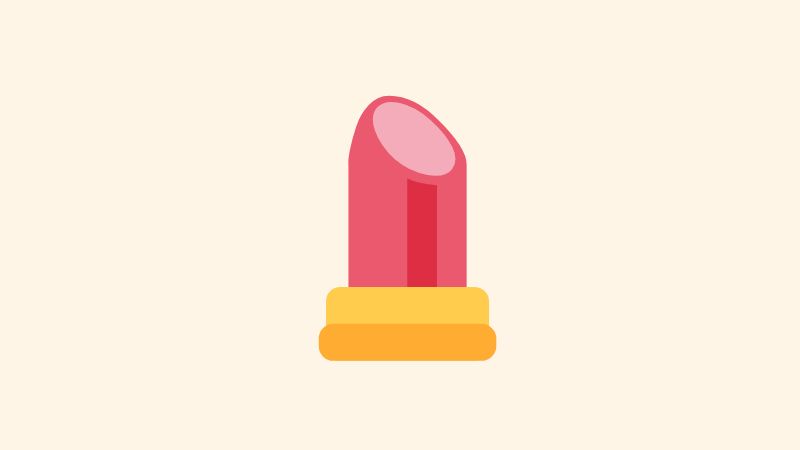Gluten and Non-Food Products
Understanding hidden sources of gluten in non-food products and the risks


Fast Facts:
⚡ Gluten cannot be absorbed through the skin - most non-food products are safe for people with coeliac disease or gluten intolerance
⚡ The main risk comes from products that might be ingested, like lipsticks, toothpaste, medications, and playdough
⚡ Always check labels on anything that may go near your mouth
⚡ Wash hands after using gluten-containing products to reduce accidental ingestion
🤔 Understanding the Risk
If you have coeliac disease, it's essential to avoid gluten in both food and any product that could be swallowed. However, gluten cannot penetrate the skin, which means most non-food items - such as skincare, shampoo, and cosmetics - do not pose a danger.
The real concern comes from products that can enter the mouth or be transferred by hand-to-mouth contact. Here's a breakdown of common items to watch.
⚠️ Products That May Pose a Risk
💄 Lipsticks, Lip Balms, and Glosses
These are applied directly to the lips and can be ingested through the day. If they contain gluten-derived ingredients, there's a potential for unintentional consumption
🪥 Toothpaste and Mouthwash
Oral care products are in direct contact with the mouth and often swallowed in trace amounts. Whilst there are currently no gluten-containing toothpaste or mouthwash brands in the UK, it's wise to check labels on a regular basis or when travelling in other countries
🧴 Hand Creams and Lotions
Although gluten can't be absorbed through the skin, residue from hand products may transfer to the mouth, especially before eating. To reduce risk, wash hands after applying any product that may contain gluten
💊 Medications
A small number of prescription and over-the-counter medications use wheat starch as a binding agent, which can contain traces of gluten, although the majority are likely to be under the threshold of 20ppm. Always check with a pharmacist or the packaging before taking any new medication.
🥤 Paper Straws
There is limited evidence that some paper or eco-friendly straws may use adhesives derived from gluten-containing ingredients. whilst the risk is low, you may prefer to use metal or silicone alternatives - or skip the straw altogether
🌈 Playdough
Many types of playdough contain wheat flour. For young children who frequently put their hands or toys in their mouths, (or try to eat anything available to them!) this poses a risk of ingestion. Gluten free alternatives are available or can be made at home using safe ingredients.
❓ What About Gluten Intolerance?
If you have gluten intolerance (non-coeliac gluten sensitivity), reactions to personal care products vary. Some people report irritation or skin issues, but this is likely caused by other ingredients (like fragrances or wheat proteins), not gluten - since it can't enter the body through the skin.
❓ Dermatitis Herpetiformis?
If you have dermatitis herpetiformis - the skin form of coeliac disease - gluten in food is the trigger, not topical products.
❓ Why Do Some Coeliacs Still Report Reactions?
While gluten shouldn’t cause issues through skin contact, some people with coeliac disease report symptoms after using certain non-food items. Possible explanations include:
1️⃣ Accidental ingestion - From lip balm, toothpaste, or hand cream residue that ends up near the mouth.
2️⃣ Skin sensitivities - Some people may have a wheat allergy, contact dermatitis, or general sensitivity to ingredients (like fragrance, alcohols, or wheat proteins). These can cause rashes, itching, or irritation, but are not related to coeliac disease or gluten intolerance. A dermatologist or allergist can help determine the cause.
3️⃣ Placebo effect or coincidence - Symptoms like fatigue, bloating, or brain fog are sometimes incorrectly attributed to gluten when they could be caused by other factors, such as stress, unrelated GI issues, or even coincidence.
🌾 Wheat Allergy Is Different
If you have a wheat allergy, you may need to be more cautious than someone with coeliac disease or gluten intolerance. Wheat proteins can cause allergic reactions through ingestion, skin contact, or inhalation.
👉🏾 Read more about non-coeliac gluten conditions here
🎯 Quick Recap:
Most non-food products are safe for people with coeliac disease - but staying aware of what might go near or into your mouth is key. By reading labels and understanding potential exposure points, you can confidently manage coeliac disease, gluten intolerance, or a wheat allergy without unnecessary worry.